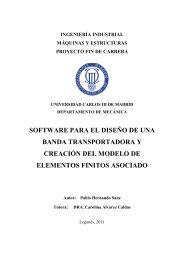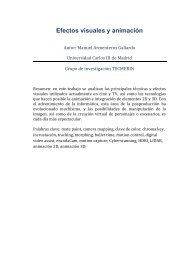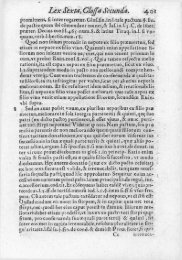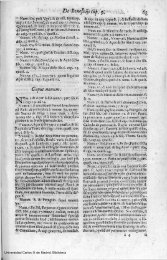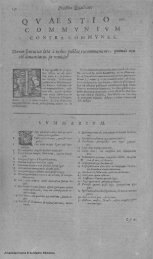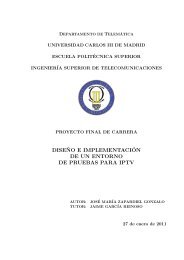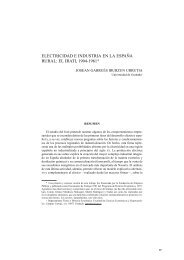Land tenure inequality, harvests, and rural conflict ... - e-Archivo
Land tenure inequality, harvests, and rural conflict ... - e-Archivo
Land tenure inequality, harvests, and rural conflict ... - e-Archivo
You also want an ePaper? Increase the reach of your titles
YUMPU automatically turns print PDFs into web optimized ePapers that Google loves.
the log of population density <strong>and</strong> population growth between 1920 <strong>and</strong> 1930 (from<br />
Censo de Población, 1920, 1930). It would be far-fetched to compare the competition<br />
over scarce l<strong>and</strong> with falling living st<strong>and</strong>ards <strong>and</strong> a Malthusian struggle for survival.<br />
In fact, mortality rates almost halved from 1920 to 1935 in the provinces studied here<br />
in a process of gradual, continuous decline (Movimiento Natural de la Población,<br />
1920-1935). Most probably, it would be wiser to consider those variables as proxies<br />
for the competition over rents coming from valuable l<strong>and</strong>, as population would<br />
endogenously locate in the most fertile parts of the province (population growth <strong>and</strong><br />
population density have a strong, statistically significant negative correlation with<br />
distance to the largest urban centre in the province).<br />
I also add extra time-invariant variables capturing several dimensions related<br />
to the main hypotheses in the literature. Access to information <strong>and</strong> markets are<br />
proxied by the log of the linear distance between the town <strong>and</strong> the capital of the<br />
province, the log of the town’s elevation above the sea, a dummy variable taking<br />
value 1 if the town had a train station <strong>and</strong> a dummy variable taking value 1 if the town<br />
was the main town in the judicial district. iii Finally, the impact of the previous history<br />
of collective action is captured by a dummy variable taking one if the town had a<br />
registered peasant union in 1916 (IRS, 1916).<br />
The regressions use several time-dummies capturing the changes in bargaining<br />
power over the agricultural year, time-effects, as well as the potential timedependence<br />
of the process studied here. Bargaining power fluctuated throughout the<br />
year, being at its highest in May-June <strong>and</strong> November-December, when collective<br />
contracts for the wheat <strong>and</strong> olive harvest were negotiated. With the wheat or olives<br />
24




